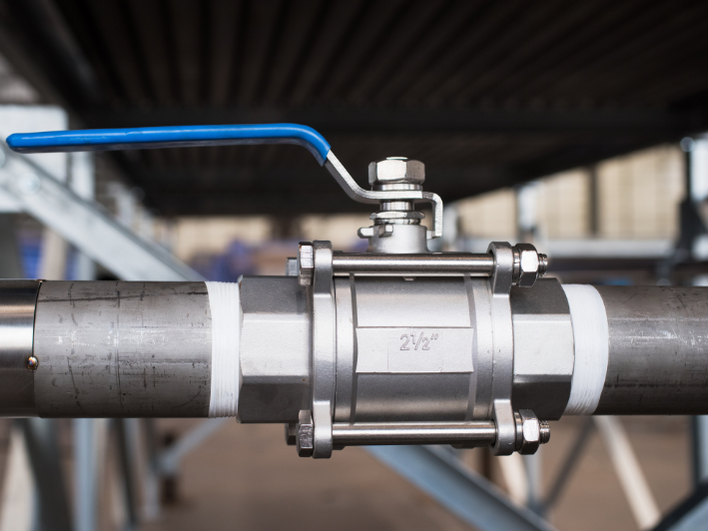Common Faults of High-Pressure Ball Valves
Common Faults of High-Pressure Ball Valves
Mar 01, 2024

When a high-pressure ball valve fails to operate and the cause cannot be identified, attention should be paid to observing the valve's discharge situation. If the high-pressure ball valve is equipped with a test valve, checking becomes relatively simple. Otherwise, the outlet connecting pipeline must be opened. Common failure phenomena of high-pressure ball valves include failure to drain cold valves, failure to drain hot valves, steam loss, continuous discharge, and slow heating.
Cold Valves: If a high-pressure ball valve cannot discharge condensate water:
1. The original design pressure is incorrect; as the pressure increases, a smaller valve nozzle is not installed; the pressure relief valve fails; the boiler pressure gauge reads low; after normal wear and tear, the valve seat hole enlarges; the high vacuum inside the return pipe increases the pressure difference, exceeding the working pressure difference of the high-pressure ball valve.
2. Condensate water or steam does not enter the high-pressure ball valve: the filter in front of the high-pressure ball valve is blocked; other high-pressure valves on the pipeline with the high-pressure ball valve are damaged; the pipeline or elbow is blocked.
3. Mechanical wear or defects require repair or replacement.
4. The body of the high-pressure ball valve is blocked by impurities, and a filter should be installed for drainage.
5. For inverted bucket-type high-pressure ball valves, when the air vent hole of the float bucket is blocked by impurities, the following measures should be taken: install a filter; slightly enlarge the vent hole; place metal wire in the vent hole.
6. For free-floating ball-type high-pressure ball valves, if the air vent hole does not work smoothly, an air resistance phenomenon may occur.
7. For thermal static-type high-pressure ball valves, the bellows element may be damaged due to water hammer, causing the high-pressure ball valve to close.
8. For disc-type high-pressure ball valves, the high-pressure ball valve may be installed incorrectly.
Hot Valves - Failure to Drain:
No condensate water flows into the high-pressure ball valve: the high-pressure ball valve is installed on a bypass valve with leaks; the discharge pipe in the dry drum breaks or is damaged; vacuum occurs in the heater coil, hindering discharge. Install a vacuum breaker between the heat exchanger and the high-pressure ball valve.
Steam Loss: If the high-pressure ball valve emits fresh steam, it may be due to the following reasons:
The high-pressure valve cannot be closed: scale blocks the valve seat hole; components are worn.
Inverted bucket-type high-pressure ball valve failure:
1. If the high-pressure ball valve emits fresh steam, close the inlet valve for a few minutes, then open it slowly. If the high-pressure ball valve can operate at this time, the high-pressure ball valve is good.
2. If the inverted bucket-type high-pressure ball valve fails to work, it is generally caused by sudden or frequent changes in dry steam pressure. In this case, a check valve can be installed at positions D and C in the diagram. If possible, the high-pressure ball valve should be installed below the collection point. For float-type high-pressure ball valves, the thermal static element may be damaged and cannot be closed.
Continuous Discharge:
If inverted bucket-type or disc-type high-pressure ball valves continuously discharge, or float-type or thermal static-type high-pressure ball valves fully open discharge, the following factors should be checked:
1. The high-pressure ball valve is too small: replace it with a larger valve, or install another high-pressure ball valve in parallel; a high-pressure ball valve may be installed in low-pressure situations. In this case, a high-pressure ball valve with suitable internal mechanisms should be selected.
2. Water supply conditions are abnormal. Foaming occurs in the boiler, causing a large amount of water to flow into the steam pipeline. Install a water separator to change the water supply conditions.
Slow Heating: The high-pressure ball valve works normally, but the process heating unit heats slowly:
One or more units are short-circuited. The solution is to install a high-pressure ball valve on each pipeline.
Although condensate water treatment appears to be effective, the selected high-pressure ball valve is too small. Try a larger high-pressure ball valve.
The air handling capacity of the high-pressure ball valve may be insufficient, or the air may not reach the high-pressure ball valve. Use auxiliary air vent valves.
Common Issues:
If the high-pressure ball valve operates normally under atmospheric pressure but issues arise when connected to the return pipe, please check the following:
1. Back pressure reduces the discharge capacity of the high-pressure ball valve: The return pipe is too narrow for a hot high-pressure ball valve; other high-pressure ball valves may emit steam when hot; the air vent hole on the condensate tank is blocked for a hot or cold high-pressure ball valve; the return pipe is blocked for a hot high-pressure ball valve; the return pipe is under excessive vacuum for a cold high-pressure ball valve.
2. Overcoming Misconceptions: If steam escapes each time the high-pressure ball valve releases condensate water, remember that flashing steam forms when condensate water is discharged to low pressure, but it usually quickly condenses within the return pipe.
Next: A Comprehensive Introduction of Forged Steel Globe Valves
Previous: Causes and Solutions of Rusting in High-Pressure Ball Valves
